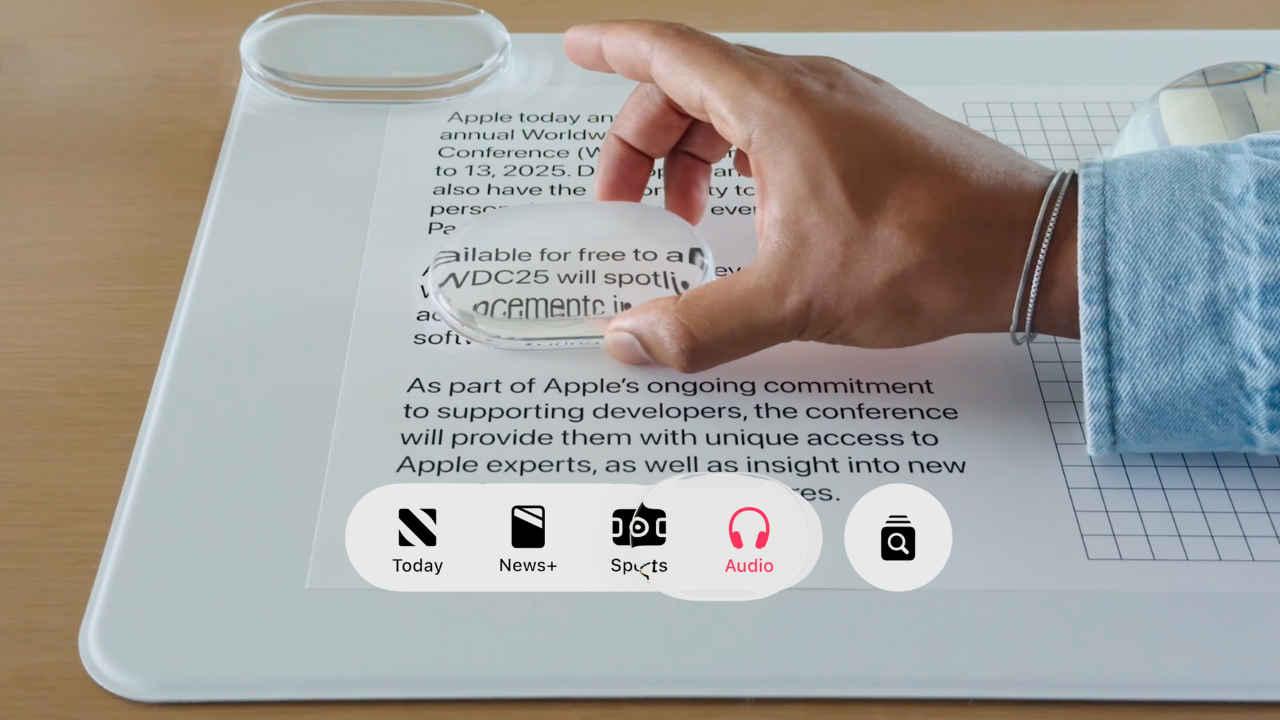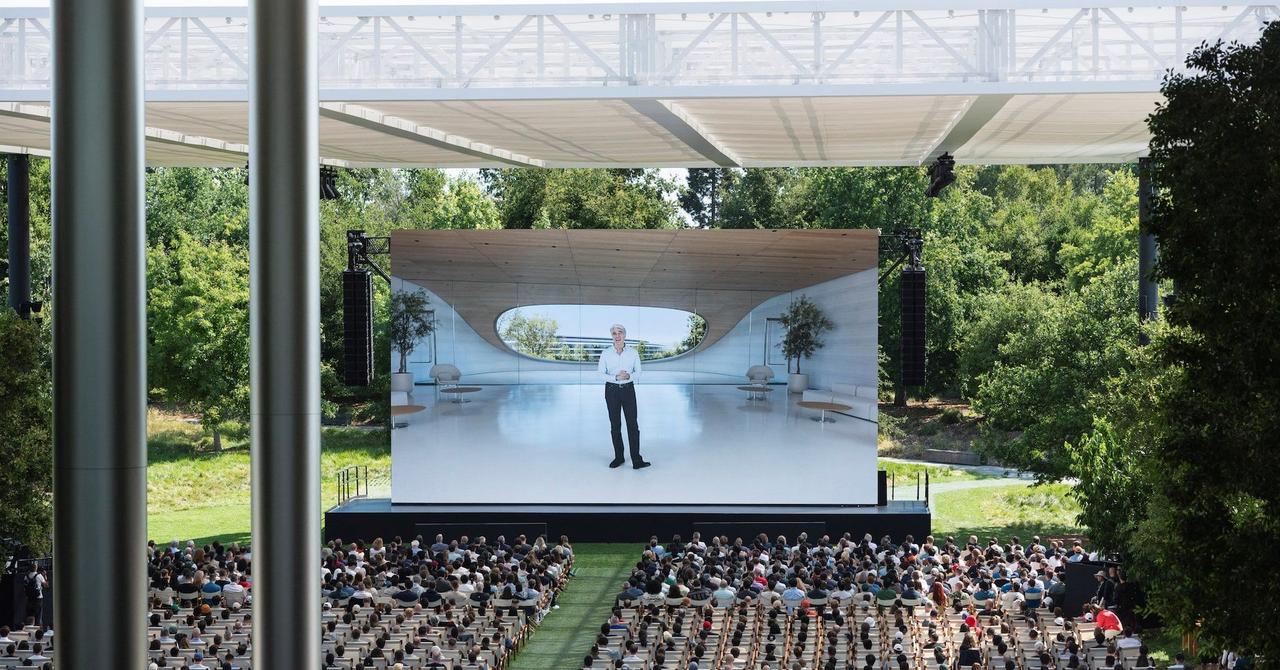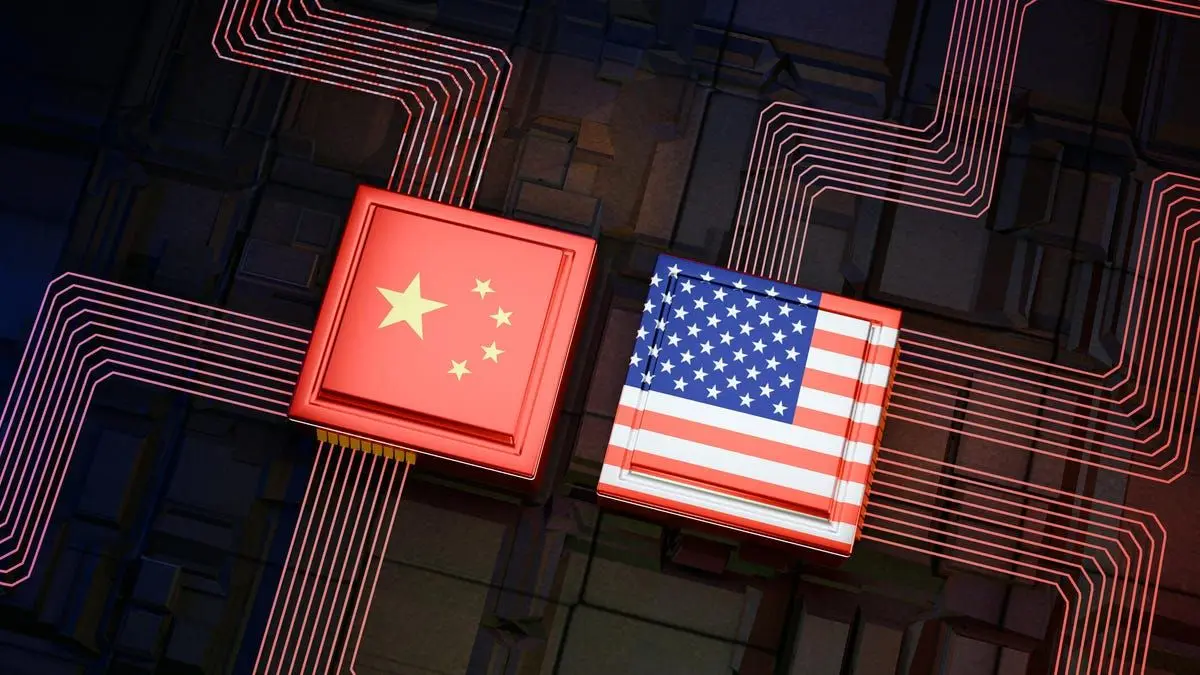Apple's 'Liquid Glass' Design Sparks Debate Amid AI Expectations at WWDC 2025
2 Sources
2 Sources
[1]
Apple's Liquid Glass panned amid questions lack of major AI announcements
What was touted to be a marvel in software aesthetics quickly spiralled into a meme fest on social media. A user on microblogging platform X termed it "iOS for toddlers", while another asked whether the new UI "was designed on Microsoft Paint". The event itself generated mixed reactions owing to underwhelmed expectations.Apple's 'Liquid Glass' was meant to be the showstopper at this year's Worldwide Developers Conference (WWDC), but it was panned by netizens as the company's new design interface language failed to impress. What was touted to be a marvel in software aesthetics quickly spiralled into a meme fest on social media. A user on microblogging platform X termed it "iOS for toddlers", while another asked whether the new UI "was designed on Microsoft Paint". The event itself generated mixed reactions owing to underwhelmed expectations, particularly over significant artificial intelligence (AI) advancements. The new interface that functions similarly to glass in the real world was being dubbed as the biggest visual overhaul to Apple's operating systems in over a decade. However, what immediately became a major talking point was the practical concerns about readability and accessibility. "I'm a bit concerned with readability," American YouTuber and influencer Marques Brownlee wrote on X. The readability concern was one that resonated with people, especially with white text against light or varied backgrounds in notifications and other UI elements. Oppenheimer's Martin Yang wrote of "significant potential degradation of readability due to the see-through design", citing "early user feedback". The Liquid Glass' colour changes automatically between light and dark surroundings based on the material around it. It is now available for developers to test and finetune their apps ahead of its official release later this year. The aim is to bring a unified, modern and highly interactive and aesthetic interface across all its platforms. Many critics and social media users also began drawing parallels between Liquid Glass and Microsoft's Aero Glass design from Windows Vista, which was known for its translucent elements. While they spoke of how Apple's implementation is likely more refined, the comparison raked up conversations surrounding a perceived lack of originality. Melius Research analysts said it "looks very nice but isn't exactly the kind of stuff that drives the 'buy orders' on the trading desk". WWDC is Apple's annual event used to represent the cutting edge with software engineers, but analysts said it has lost its pre-eminence lately owing to underwhelmed expectations, particularly regarding significant AI advancements. At a time when there's ground-breaking work being done with AI and the likes of OpenAI, Microsoft, Google and Meta putting their might behind advancements in the space, many analysts and tech enthusiasts expressed disappointment over the lack of significant AI innovations. In fact, the Apple stock dropped 1.2% to close at $201.51 on Monday. Be it CFRA Research analyst Angelo Zino who called the event "a dud" in terms of AI or Wedbush analyst Dan Ives, who said in a post on LinkedIn that it showed "slow and steady improvements" but was "overall a yawner", the internet was rife with opinions. "Has there actually been an exciting WWDC in the last decade? Where is the innovation? This feels like what ChatGPT thinks people want from Apple," X user @MikeYelovich wrote in a post. To be sure, analysts had widely expected this year's event to be underwhelming, with minor software improvements. Barclays said it was not expecting much, but was still "slightly disappointed" at the content and features announced. "We view changes to all device Operating Systems and Apple Intelligence as incremental, and not enough to drive any upgrade cycles," the brokerage was quoted as saying in a note. Morgan Stanley said the sentiment is unlikely to shift "until more tangible AI progress is evident", though it added that the Cupertino-based firm clearly still has the ingredients to make it an AI winner. Another aspect that put a dampener on investor sentiment was that the company admitted it needs more time to complete its long-delayed overhaul of the Siri voice assistant which some said showed Apple is struggling to meet investor demands for innovation in AI. Bob O'Donnell, president and chief analyst at TECHnalysis Research, wrote in an opinion piece that it is critical both strategically and economically for Apple to start creating meaningful AI features.
[2]
Apple Liquid Glass design: Half full, half empty but too big to ignore
I've watched Apple refine its software facade for close to two decades now, from the skeuomorphic wooden bookshelves of iOS 6 to the flat, neon-tinted panels of iOS 7, from the frosted-glass translucency of Yosemite to the stark minimalism of Sonoma. Yet, even after all these iterations, I never quite expected Apple to pull the glass inside out. And yet here we are... Liquid Glass, the design language Apple unveiled at WWDC 2025, feels like a bold - and utterly inevitable - next step in the never-ending quest to keep its ecosystem feeling coherent, alive, and just a little bit unpredictable. Liquid Glass isn't merely frosted translucency on virtual steroids, as you saw on the keynote video, but an environment-aware, context-sensitive material engine that actively watches what's happening on your screen - and around you. As Apple puts it, Liquid Glass reflects and refracts its surroundings, while dynamically transforming to help bring greater focus to content. Also read: WWDC 2025: iOS 26 announced with new Liquid Glass design, AI features and more capabilities Imagine a slider that subtly shifts hue when you flip into Dark Mode, or sidebars that catch flecks of your wallpaper's gradient and swirl them into their blurred depths. This isn't static blur - it's real-time light-field rendering that factors in your chosen wallpaper, ambient brightness, and even the momentum of your scrolling thumb. Under the hood, Apple's new rendering engine calculates refraction and colour adaptation on the fly, enabling buttons, panels, and widgets to adopt a semi-reflective sheen that varies from device to device - and from moment to moment. On an iPhone 16 Pro, you might see a gentle sparkle along a slider track as you adjust volume. On a 16-inch MacBook Pro, your Finder sidebar could echo the pastel hues of your Mojave beach wallpaper. Apple's Human Interface Guidelines now spell out how developers can tap into SwiftUI, UIKit, and AppKit APIs to adopt Liquid Glass with a few lines of code - no performance penalty, thanks to dedicated hardware acceleration baked into every Apple Silicon chip. The design community's response has been uniformly enthusiastic - on Twitter alone, I counted dozens of calls to make Liquid Glass the visual hallmark of the decade (maybe they are all Apple users?). I won't be surprised if folks on Dribbble start mocking up Liquid Glass-infused versions of Slack, Notion, and even Android-style launches. Many people are lauding the buttery-smooth real-time blur effect of Liquid Glass, noting that Apple's commitment to fluid animations again outpaces what even latest mobile GPUs can muster in Android devices. Also read: At WWDC 2025, Apple puts design first again with iOS 26, macOS 26 Tahoe and iPadOS 26 On the other hand, accessibility advocates warn that overly translucent panels could muddy text contrast for users with low vision. Here I'd say the concerns are valid, since even I think Liquid Glass animations in their current form can create instances of sacrificing on readability, and no one wants that. Reddit threads mock the return of "Aero Glass," complete with GIFs of Windows Vista-era mismatches - years before Microsoft figured out how to tame its own translucency. The Liquid Glass effect is also being described as "visually noisy," especially for instances related to overlapping Liquid Glass layers in the Control Center, in particular. I can't think of another tech company other than Apple that could've pulled off something as lavish or frivolous as Liquid Glass. Deep down, it's a luxury Apple can afford thanks to its silicon-centric vertical integration. From custom GPU cores to display pipelines, Apple simply owns every link in the hardware-software chain. And make no mistake, unifying all its platforms - iOS, iPadOS, macOS, watchOS, tvOS and more - under a coherent visual language was an inevitability. If you've ever toggled between your iPhone's Control Center and your Mac's Action Center and winced at the stylistic mismatch, you understand why. As Apple Silicon blurs the line between desktop and handheld performance, its UI needed a new visual glue. That's what Liquid Glass is all about. Of course, Liquid Glass isn't perfect right now, and Apple has time to act on some of the readability concerns that are rightly being raised before they ship out Liquid Glass across all their OSes later this year. Also read: Apple introduces iOS 26 and here is every new feature you will get Love it or hate it, Liquid Glass also reminds us of how with Apple, art and interface are almost always inseparable. Even the most cynical among us can't look at a beautifully refracted widget edge and not feel a fleeting spark of delight. As Boromir said of the One Ring, "It is a strange fate that we should suffer so much fear and doubt over so small a little thing." As a statement of design craftsmanship, Liquid Glass stands as another testament to Apple's singular obsession of turning the mundane into the magical, even if it causes a stir for all the wrong reasons and appears to be frivolous at first. Because sooner or later, invariably it turns out to be a blueprint for the rest of the competition to follow.
Share
Share
Copy Link
Apple's introduction of 'Liquid Glass' design at WWDC 2025 generates mixed reactions, with praise for innovation but criticism for potential accessibility issues and lack of major AI announcements.
Apple Introduces 'Liquid Glass' Design at WWDC 2025
At the Worldwide Developers Conference (WWDC) 2025, Apple unveiled its new 'Liquid Glass' design language, touted as the most significant visual overhaul to Apple's operating systems in over a decade
1
. This innovative interface, designed to function similarly to glass in the real world, aims to bring a unified, modern, and highly interactive aesthetic across all Apple platforms1
.The Mechanics of Liquid Glass
Liquid Glass is not merely a static design element but an environment-aware, context-sensitive material engine. It actively adapts to what's happening on the screen and in the surrounding environment
2
. The new rendering engine calculates refraction and color adaptation in real-time, enabling UI elements to adopt a semi-reflective sheen that varies across devices and moments2
.
Source: ET
Developer Integration and Performance
Apple has updated its Human Interface Guidelines to help developers integrate Liquid Glass into their apps. The company claims that with just a few lines of code, developers can tap into SwiftUI, UIKit, and AppKit APIs to adopt Liquid Glass without performance penalties, thanks to dedicated hardware acceleration in Apple Silicon chips
2
.Mixed Reactions and Criticisms
While some in the design community have enthusiastically embraced Liquid Glass, calling it the visual hallmark of the decade, others have raised concerns
2
. Critics have drawn parallels to Microsoft's Aero Glass design from Windows Vista, questioning Apple's originality1
. More importantly, accessibility advocates have warned that overly translucent panels could compromise text contrast for users with low vision2
.
Source: Digit
Impact on Readability and Usability
Practical concerns about readability and accessibility have become major talking points. Influential tech figures like Marques Brownlee expressed concern about readability, especially with white text against light or varied backgrounds in notifications and other UI elements
1
. Some users on social media platforms dubbed it "iOS for toddlers" and questioned whether it was "designed on Microsoft Paint"1
.Related Stories
Market and Investor Response
The reception among investors and market analysts has been lukewarm. Apple's stock dropped 1.2% to close at $201.51 on the day of the announcement
1
. Analysts from various firms, including CFRA Research, Wedbush, and Barclays, described the event as underwhelming, particularly in terms of AI advancements1
.AI Expectations and Disappointments
A significant point of contention was the perceived lack of major AI announcements. In an era where companies like OpenAI, Microsoft, Google, and Meta are making groundbreaking advancements in AI, many analysts and tech enthusiasts expressed disappointment over Apple's offerings in this space
1
. The company's admission that it needs more time to complete the long-delayed overhaul of the Siri voice assistant further dampened investor sentiment1
.The Bigger Picture
Despite the mixed reactions, some analysts believe that Apple still has the potential to be an AI winner. Morgan Stanley noted that while sentiment is unlikely to shift until more tangible AI progress is evident, Apple clearly possesses the necessary ingredients
1
. Bob O'Donnell, president and chief analyst at TECHnalysis Research, emphasized the critical importance for Apple to start creating meaningful AI features, both strategically and economically1
.In conclusion, while Apple's Liquid Glass design represents a bold step in UI evolution, its reception has been mixed. The company faces the challenge of balancing aesthetic innovation with practical usability and meeting growing expectations in AI advancements.
References
Summarized by
Navi
Related Stories
Apple Unveils iOS 26 with New 'Liquid Glass' Design and Enhanced AI Features at WWDC
10 Jun 2025•Technology

Apple Unveils iOS 26 with Liquid Glass Design and AI-Powered Features at WWDC 2025
04 Jun 2025•Technology

Apple's AI Strategy: Unveiling 'Apple Intelligence' Amidst Skepticism and Anticipation
10 Sept 2024

Recent Highlights
1
Google launches Gemini 3 Flash as default AI model, delivering speed with Pro-grade reasoning
Technology

2
OpenAI launches GPT Image 1.5 as AI image generator war with Google intensifies
Technology

3
OpenAI launches ChatGPT app store, opening doors for third-party developers to build AI-powered apps
Technology





